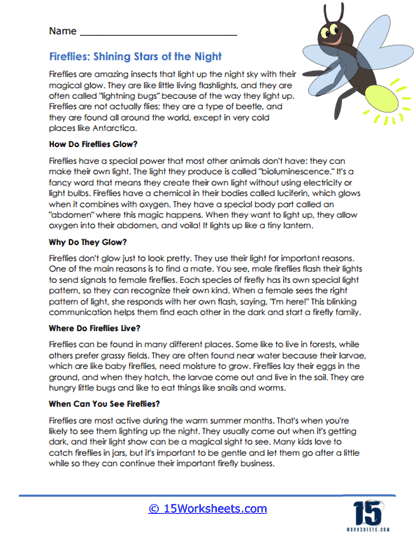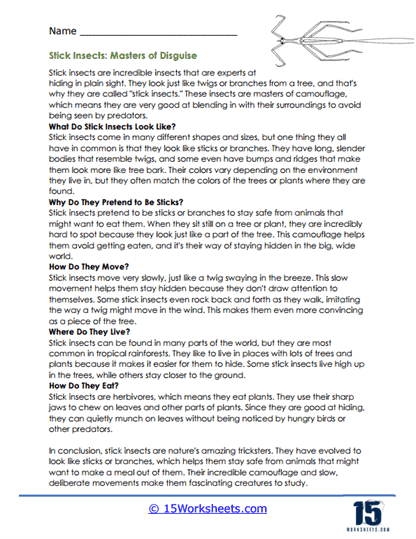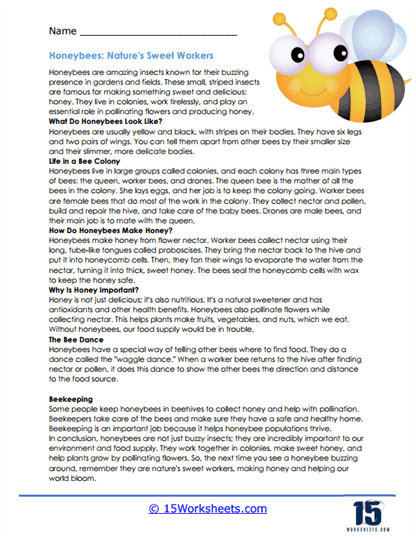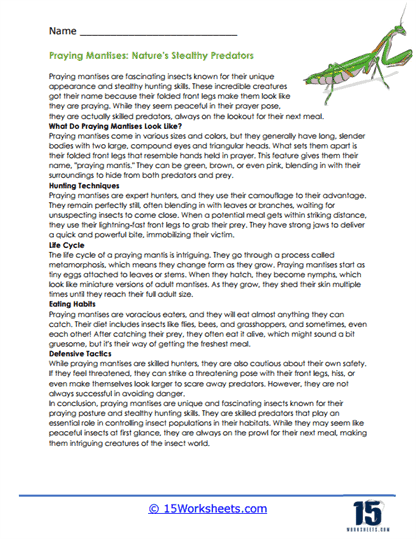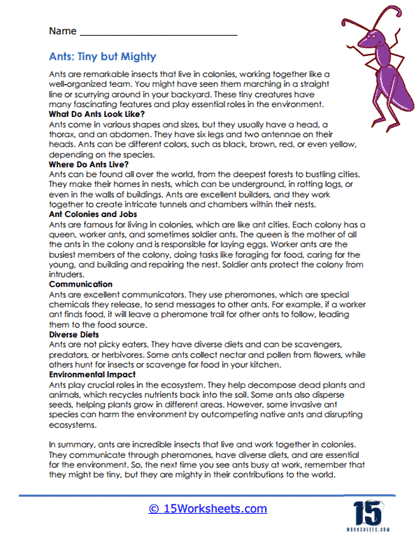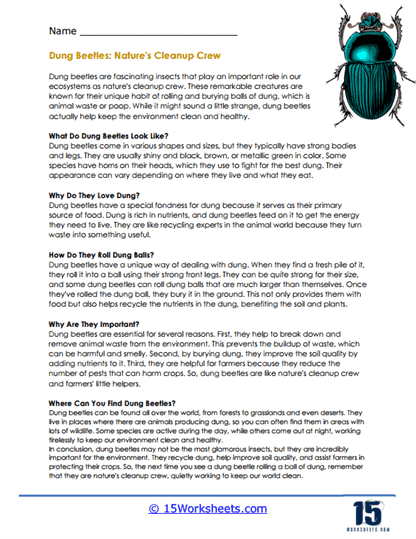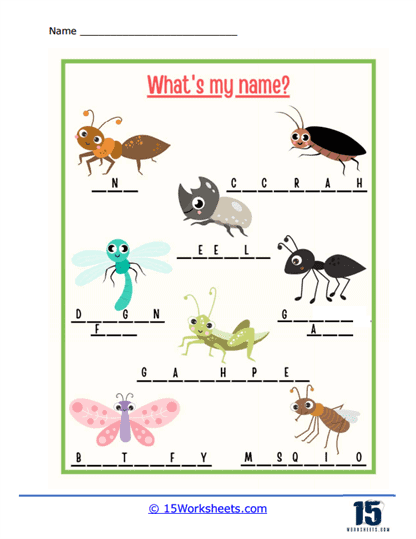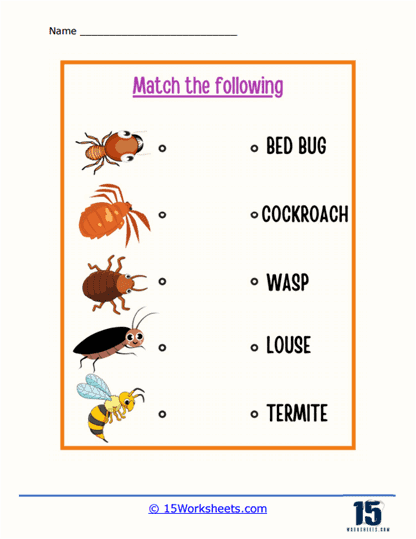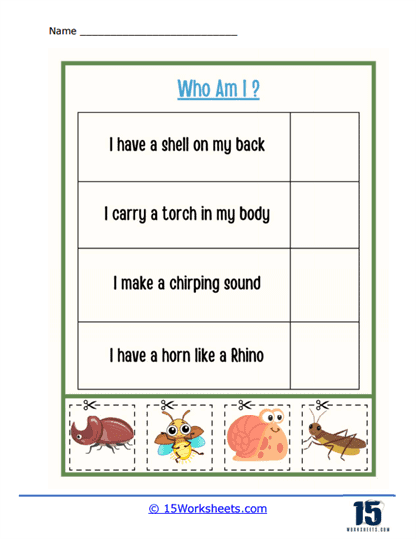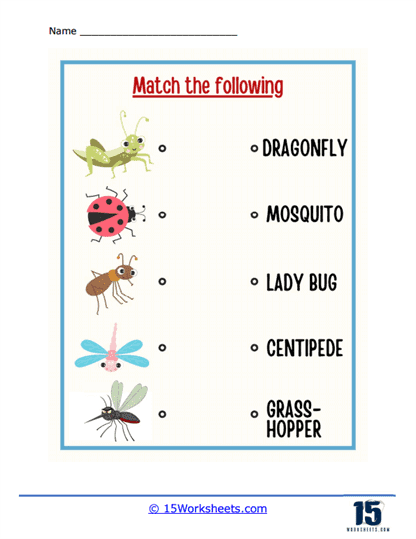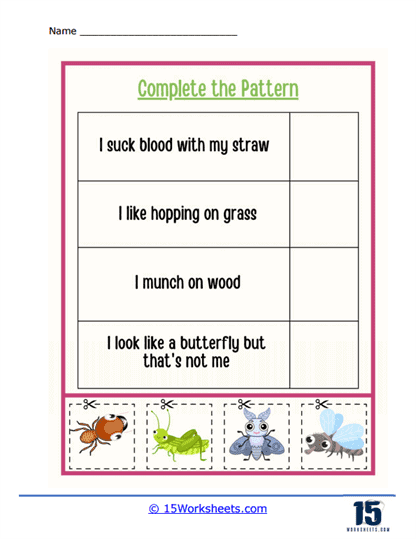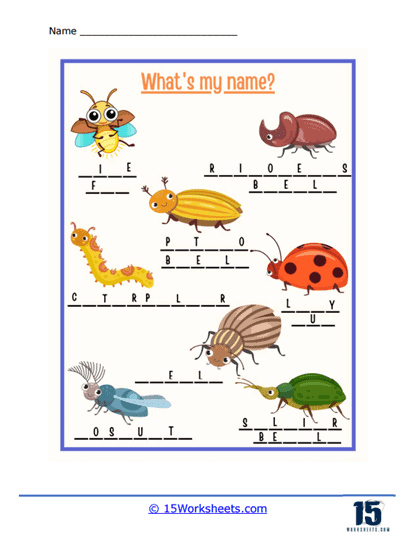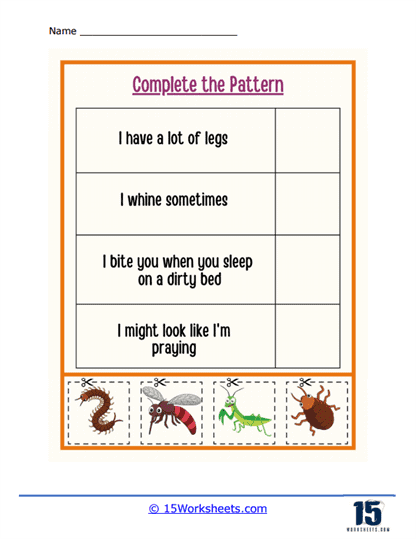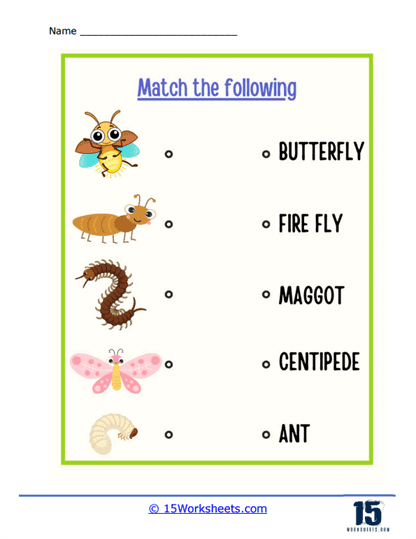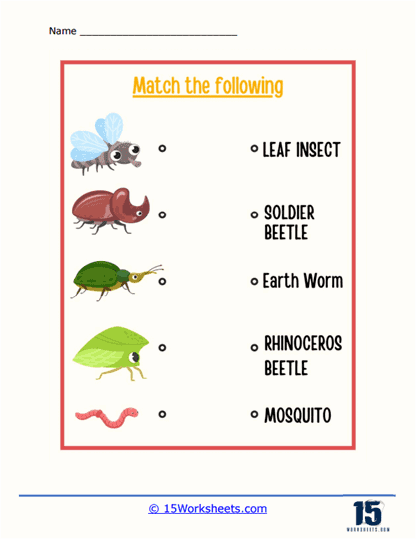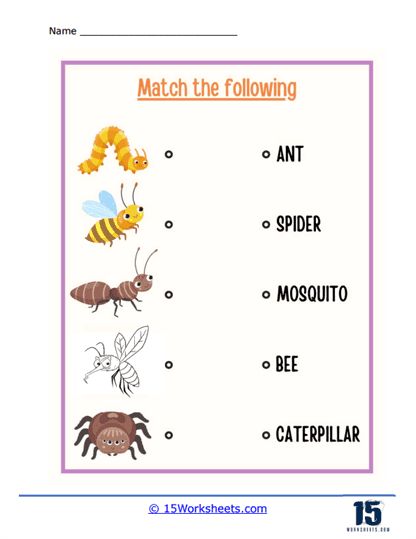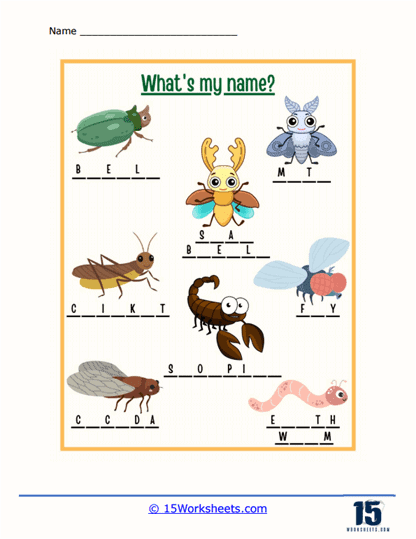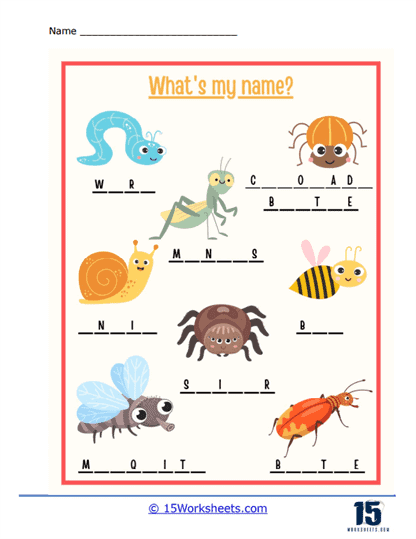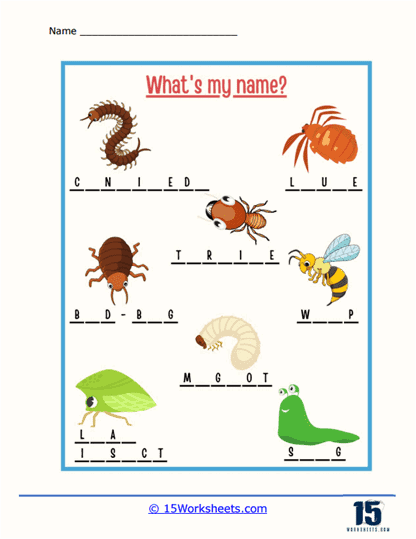Insects Worksheets
All About These 15 Worksheets
This collection of 15 worksheets is designed to help students learn about insects in a fun and engaging way. The exercises focus on identifying and matching insect names to their pictures, with some worksheets asking students to provide the missing letters to the insect names. There are also worksheets that feature descriptions of insects, requiring students to match them to the correct name.
As these worksheets provide information on insect characteristics, habitats, and behaviors, students are encouraged to learn more about these fascinating creatures. These worksheets are designed to be suitable for students of different ages and proficiency levels in English, and can be used as classroom activities or as homework assignments. By engaging with these worksheets, students can develop their knowledge of insects, improve their vocabulary and language skills, and foster an appreciation for the natural world.
What Are Insects?
An insect is a type of arthropod characterized by three main body parts (head, thorax, and abdomen), three pairs of legs, one pair of antennae, and often one or two pairs of wings. Insects are the most diverse group of animals on Earth, with over 1 million described species, and are found in almost every habitat on the planet.
Insects play a vital role in ecosystems, serving as pollinators, decomposers, predators, and prey for other animals. They are also important for human activities such as agriculture, as many insect species are responsible for pollinating crops and controlling pest populations.
While there is a great deal of diversity among insect species, they share certain common characteristics, such as a hard exoskeleton, compound eyes, and a segmented body. Insects can be found in a wide range of sizes, from tiny parasitic wasps that are less than 1 millimeter long, to giant beetles that can be over 15 centimeters in length.
Overall, insects are a fascinating and important group of animals that have evolved to occupy a wide range of ecological niches and play critical roles in the functioning of ecosystems.
The most common insects on Earth are difficult to determine with certainty, as insect populations can vary widely depending on factors such as location, habitat, climate, and time of year. However, some of the most abundant and widespread insect groups include:
- Beetles – With over 400,000 known species, beetles are the most diverse group of insects and are found in almost every habitat on Earth.
- Ants – There are over 12,000 known species of ants, and they are found on every continent except Antarctica.
- Butterflies and moths – With over 180,000 known species, butterflies and moths are among the most recognizable insects and are found in a wide variety of habitats.
- Flies – With over 150,000 known species, flies are an incredibly diverse group of insects found in almost every habitat on Earth.
- Bees and wasps – These insects are important pollinators and predators, respectively, and there are over 20,000 known species of bees and over 30,000 known species of wasps.
- Termites – These insects are important decomposers and are found in most tropical and subtropical regions of the world.
Overall, while these groups of insects are some of the most common and widespread, there are still many more species to be discovered and studied, and the relative abundance of different insect groups can vary depending on the location and ecosystem.
It is estimated that there are around 5.5 million different species of insects on Earth, making up over 80% of all known animal species. However, estimating the total number of individual insects on the planet is difficult, as their populations can vary widely depending on factors such as habitat, climate, and available resources.
One study published in 2020 estimated that the total biomass of insects on Earth is around 1.2 billion tons, which is equivalent to the biomass of all other animals combined. However, this number is based on extrapolations from limited data and should be taken with caution.
Overall, while it is difficult to estimate the total number of individual insects on Earth, it is clear that they play a vital role in ecosystems and are a fundamental part of the planet’s biodiversity.

